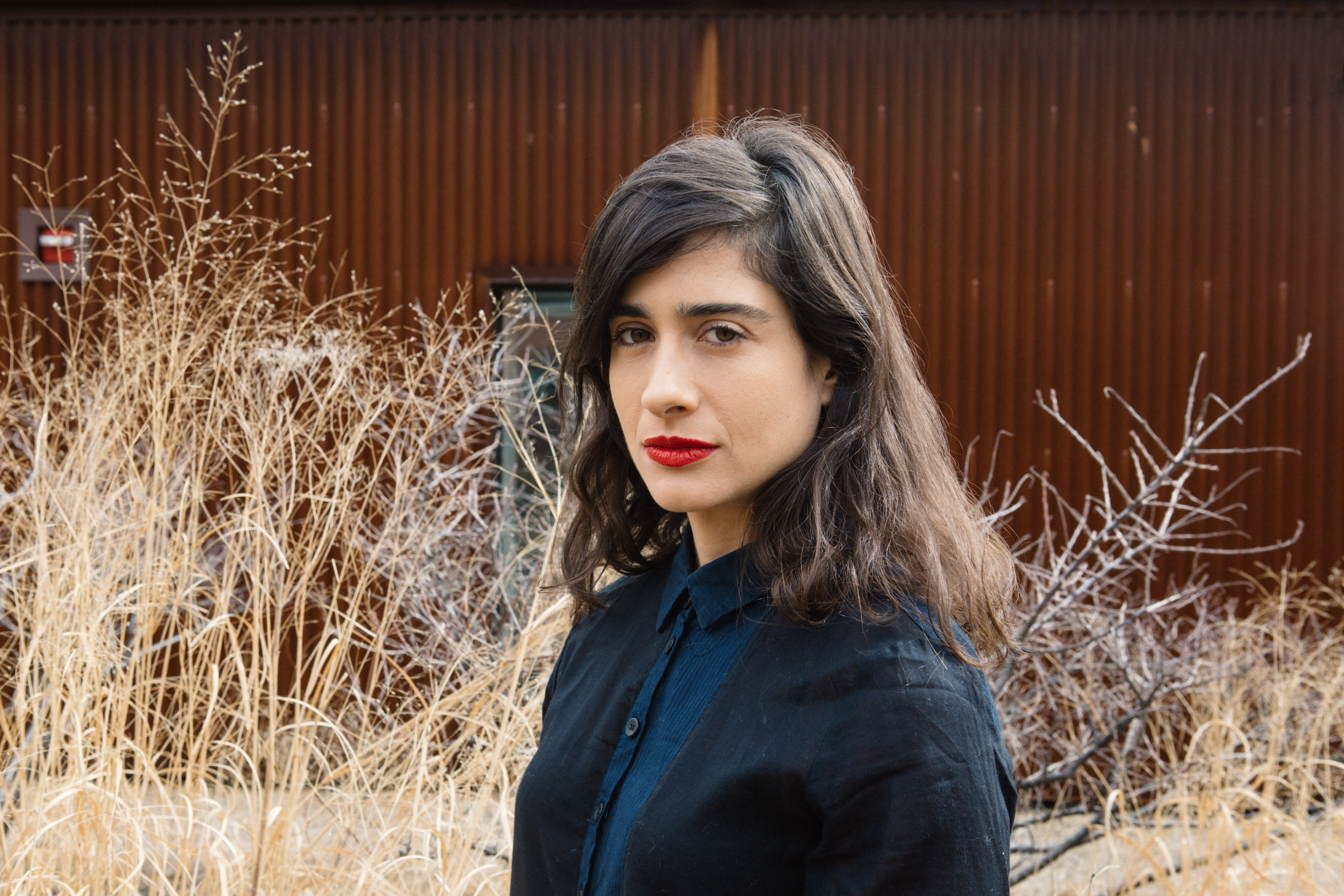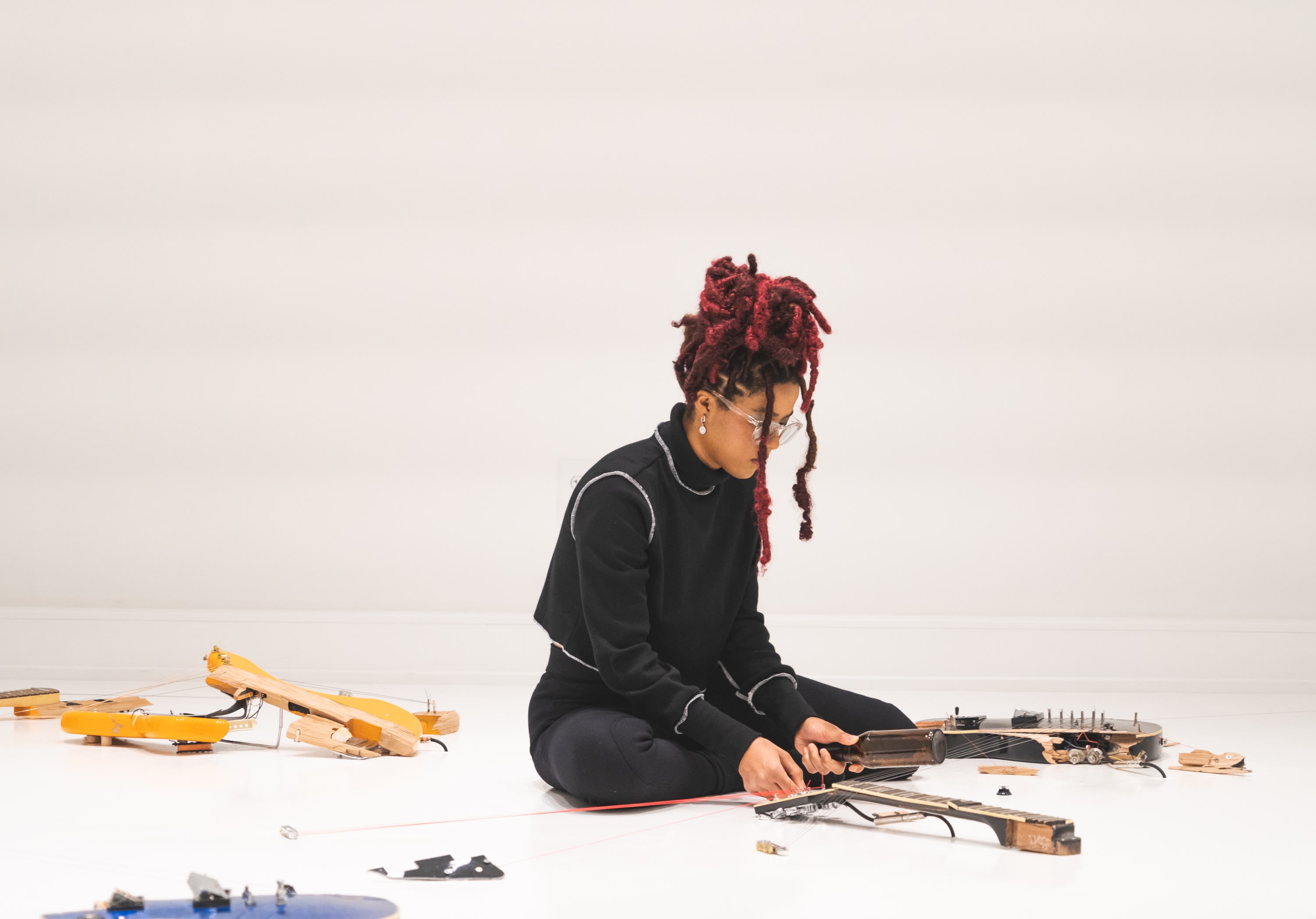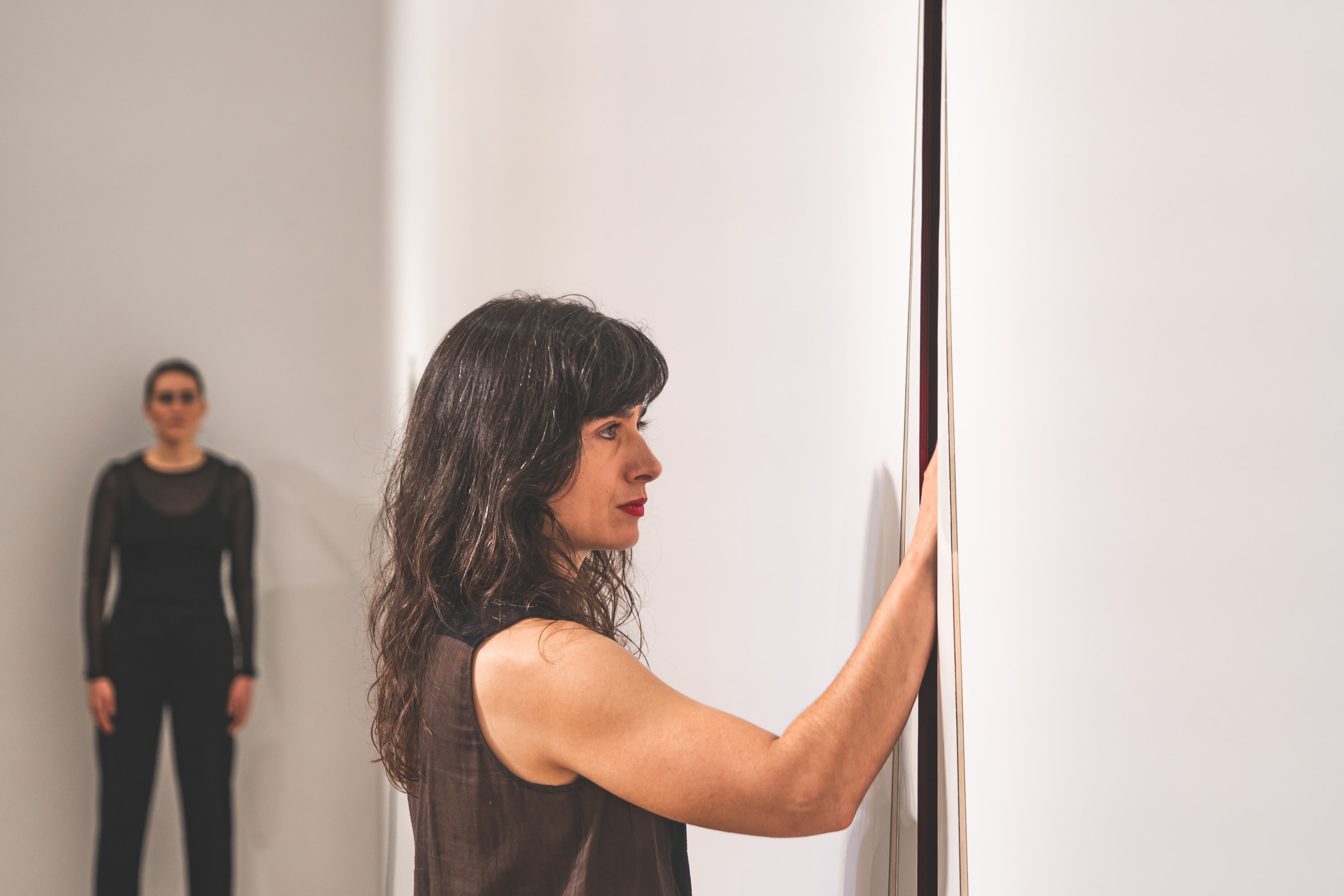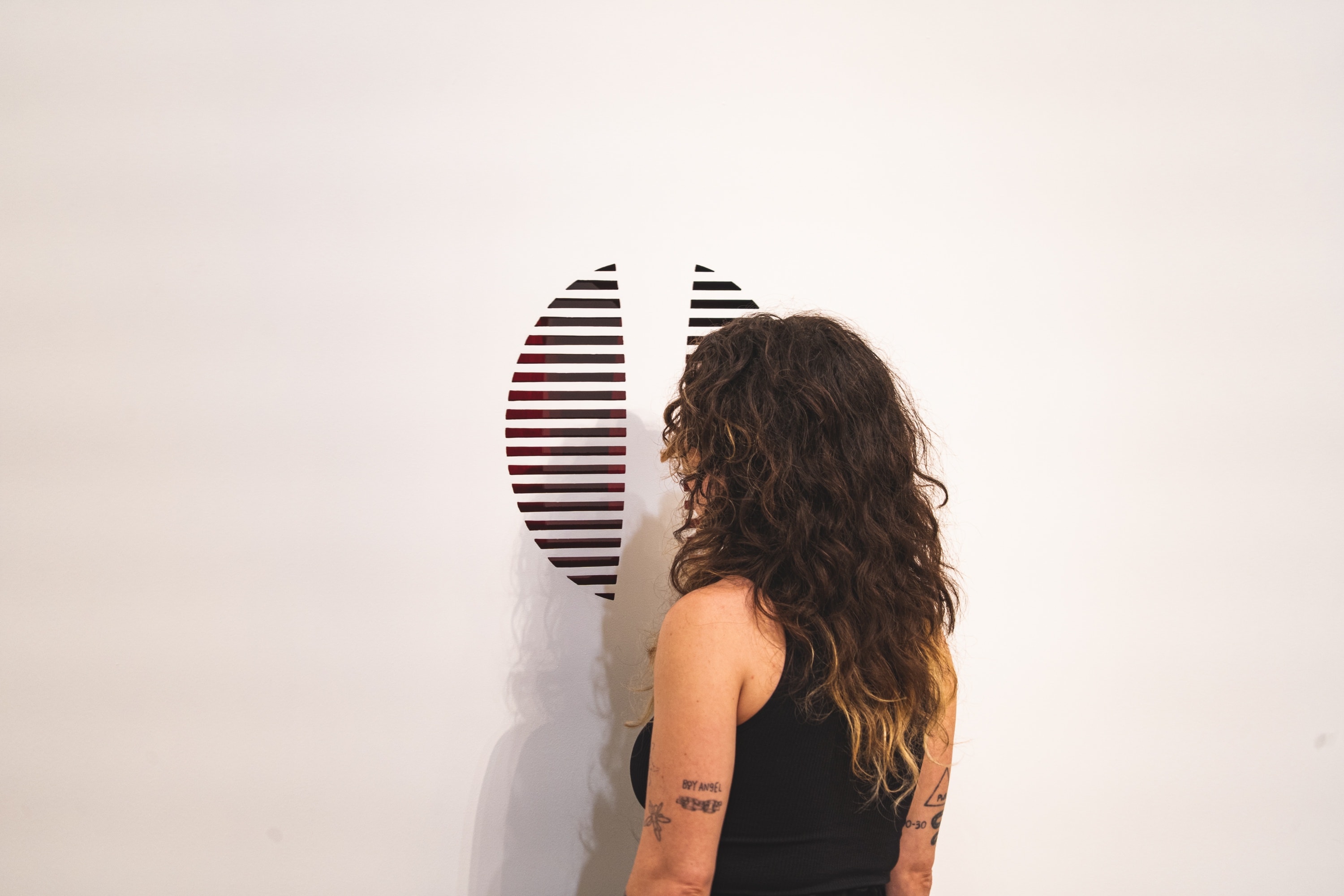The performance artist talks to Terence Trouillot about her new exhibition at The Bass Museum, Miami and letting her work exist within its own set of rules
Terence Trouillot: I'm excited to talk to you about your upcoming exhibition ‘Perimeters’ at The Bass in Miami. It’s essentially a huge installation inspired by your ‘Inversion’ series (2020–ongoing), which you first showed at Shulamit Nazarian in Los Angeles. That was your first time making instruments by cutting holes into gallery walls, right?
Naama Tsabar: Yes, but the Inversions are connected to an earlier work that I first showed at the Guggenheim in 2014 called Closer. It’s a freestanding corner partition – two walls coming together and not supporting anything but themselves. And on one side there are these two microphones penetrating the walls and on the other side these holes: one has string elements inside of it and the other is a singing chamber. But the first Inversion at Shulamit Nazarian and the ones that are going to be in the Bass show differ from each other, although they’re both installed in the wall of the gallery or museum. They’re architectural in that sense.
So for this show, there’s going to be a set of five Inversion works in the main space of the gallery – the largest in the museum. You’re basically walking into an empty space and, of course, there’s these holes in the wall. The first thing you see, in the hallway leading to the main space, is a Melody of Certain Damage (2018–ongoing), which is a broken-guitar piece. And then there’s a room that’s just full of other broken or deconstructed guitars. So, it’s kind of a landscape of debris but everything is connected and playable; everything is on the floor.

Naama Tsabar, Courtesy of the artist.
TT: There’s also a shoe piece if I remember correctly.
NT: Yeah, you walk further into the hallway and there’s another space on your left, it’s really small. And in there will be a new piece called October 13 2019–July 5 2021 (2021), comprising my shoes and a metronome. And then in the big gallery you have this work that's called Twilight (Gaffer Wall) (2021), and it’s this curved wall that we built that’s – from floor to ceiling – just strips of gaffer tape. So, it’s like this really tall transitional space that sort of plays with the lights. It’s almost like a nocturnal veil that you walk through.
TT: How are these Inversions different from the ones you showed in Los Angeles?
NT: There are still string instruments that you could play with your hands inside the walls, but for the Bass show I incorporated purfling, which are these violin inlays: the things that you use on the edges of nicer violins as decoration. It’s this kind of maple wood, and in the show it's inserted into the wall. And then there’s one work that has sets of strings and also guitar necks inside, some with bass strings, and they’re larger than the ones in Los Angeles. They’re deeper, and some of them even call upon activation by two people if you wanted to. There’s going to be a singing chamber, too, like a singing Inversion, which is actually the one you saw at Shulamit Nazarian, which was this confessional in the wall.

Perimeters performance, 2021, The Bass museum, Miami Beach, FL. Composed in collaboration with Gabriela Burdsall, Ale Campos, Fielded, Lee Muze, Robbi Robsta, Gabrielle Sheerer, Sarah Strauss and Naama Tsabar. Courtesy of the artist and The Bass museum. Photo: Michael Del Riego.
TT: Yes, I remember. That was cool.
NT: And then the three other Inversions are different completely in the sense that you don't have to have any mastery of an instrument or voice to activate them. The mere penetration into the wall, and the entry of the body into the wall activates a set of sensors that emits sound.
TT: Does it work like a Theremin?
NT: No. It’s a set of infrared sensors that react to how close or far you are from them. But it is reminiscent. I always thought about making a huge Theremin – that’s a dream work.
So, the sound coming off these movement Inversions, for me, is important as well. It’s an audio file that's made from two things: one is a recording from a female vocalist that I work with a lot. The second are sounds from Brood X cicadas. I went down to Maryland and recorded them. This insect is always underneath us, only comes out once every 17 years. I thought that was pretty mind-blowing.
But I’ve been thinking of that as a parallel to these spaces behind the walls, but also the gendered place of women. It’s super-interesting for me, because it’s kind of like the melodic female voice throughout Western music history and culture has been almost like a glitch in the patriarchy. Because women were given a place to express, but only if it was under the cover of melody and beauty.

Perimeters performance, 2021, The Bass museum, Miami Beach, FL. Composed in collaboration with Gabriela Burdsall, Ale Campos, Fielded, Lee Muze, Robbi Robsta, Gabrielle Sheerer, Sarah Strauss and Naama Tsabar. Courtesy of the artist and The Bass museum. Photo: Michael Del Riego.
TT: Can you tell me a little bit about the performance that will happen in that space as well? I'm interested in this idea of bringing in people from the local community to be part of the performance. I'm curious how that works.
NT: Yes, for sure. With my performances I almost always come with one or two core musicians that know my process. So, at The Bass I'm going to have two core musicians, and there’s going to be five local performers. And the performance is completely collaborative. It’s written through a set of seven rehearsals – we just explore. And through the exploration, usually what I do mostly in these rehearsals is just film and give extra sounds.
After three days of just complete play and exploration and explosions, I go back through hours of material and I find interesting places and then we all watch them together, and we start elaborating on those places, weaving things together. I should also say that I work only with female identifying, gender non-conforming people, so I'm looking for something very specific.

Perimeters performance, 2021, The Bass museum, Miami Beach, FL. Composed in collaboration with Gabriela Burdsall, Ale Campos, Fielded, Lee Muze, Robbi Robsta, Gabrielle Sheerer, Sarah Strauss and Naama Tsabar. Courtesy of the artist and The Bass museum. Photo: Michael Del Riego.
TT: I'm fascinated by this idea of working with non-gendered musicians, and also thinking about your practice in that sense. There’s this kind of queering of rock’n’roll, let’s say, or just music in general. It makes me think of the Destroy All Monsters, Mike Kelley’s band, and DISBAND, a band formed by Martha Wilson, Daile Kaplan and Barbara Ess.
NT: I'm trying to move away a bit from queering rock’n’roll. I feel like with these works, with the Inversions, with the Felts ('Work on Felt' series, 2012–ongoing), I'm trying to just push it further.
When you do something, you do it in relation to something, and that's fine – we’re not in a void, right? So in relation to what it means to be in a band, a male band, the machismo, all these things. But trying to think about also creating things that are their own. And I think that, for me, with these works it’s trying to let them exist within their own set of rules.
So just thinking about expanding, rather than just bouncing against something. I feel like I bounced a lot in contrast to all these things, rock’n’roll, but now I'm just trying to give these works and these musical moments and these collaborative performances their own existence. I feel like I'm going through a next stage for these.
Perimeters is on view at The Bass Museum, Miami, until 17 April 2022.


